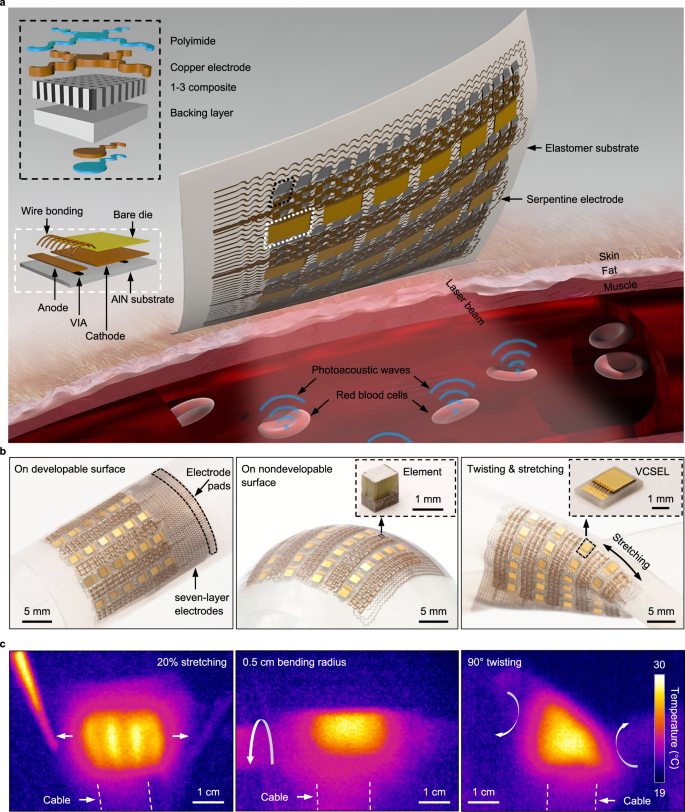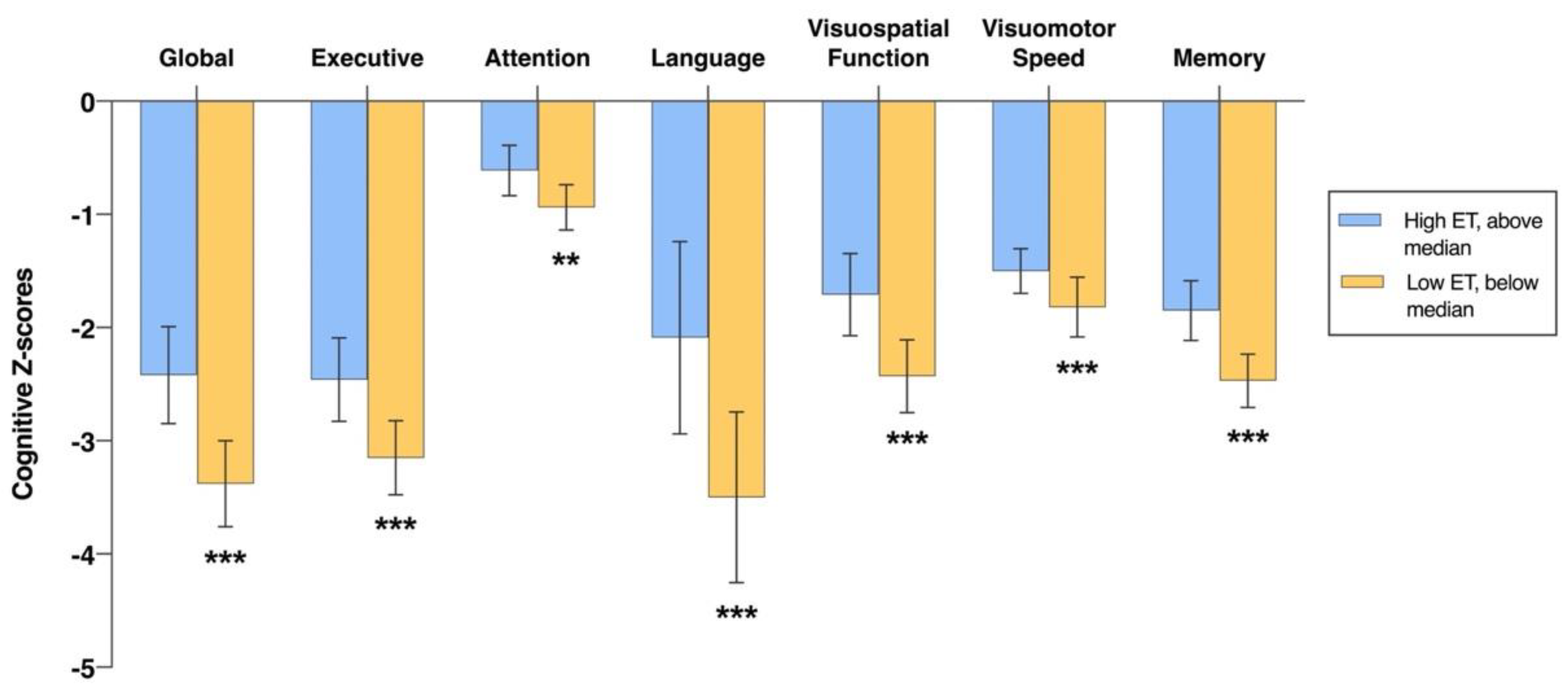光音響センサーは、腫瘍や臓器の機能不全などの臨床診断に役立つ可能性がある A photoacoustic sensor could help clinicians diagnose tumors, organ malfunction and more
2022-12-16 カリフォルニア大学サンディエゴ校(UCSD)
「体内のヘモグロビンの量と位置は、血液の流れや特定の部位への蓄積に関する重要な情報を提供します。カリフォルニア大学サンディエゴ校のナノ工学教授で、この研究の責任著者であるSheng Xu氏は、「この装置は、高リスク群の綿密なモニタリングに大きな可能性を示しており、緊急時にタイムリーな介入が可能になります」と述べています。
論文「A photoacoustic patch for three-dimensional imaging of hemoglobin and core temperature」は、「Nature Communications」2022年12月15日号に掲載されています。
体内の血液循環が悪くなると、臓器の機能低下が起こり、心筋梗塞や四肢の血管疾患など、さまざまな病気を引き起こす可能性があります。また、脳や腹部、嚢胞などに異常な血液が貯留している場合は、脳出血や内臓出血、悪性腫瘍の可能性があります。継続的なモニタリングは、これらの状態の診断に役立ち、タイムリーで命を救う可能性のある介入を促進するのに役立ちます。
この新しいセンサーは、既存の生体分子のモニタリング方法におけるいくつかの重要な制限を克服しています。新しい、柔軟で低フォームファクターのウェアラブルパッチは、皮膚に快適に取り付けられ、非侵襲的な長期モニタリングが可能です。皮膚表面の生体分子のみを感知する他のウェアラブル電気化学デバイスとは異なり、皮膚下数センチの深部組織において、ミリメートル以下の空間分解能でヘモグロビンの3次元マッピングを行うことができる。他の組織に対して高いコントラストを実現することができます。光学的選択性があるため、異なる波長のレーザーダイオードを統合して、検出可能な分子の範囲を拡大することができ、臨床応用の可能性もあります。
パッチは、柔らかいシリコーンポリマーマトリックスに、レーザーダイオードと圧電トランスデューサーのアレイを備えています。レーザーダイオードはパルスレーザーを組織内に照射します。組織内の生体分子は光エネルギーを吸収し、周囲の媒体に音響波を放射します。「また、低出力のレーザーパルスを用いるため、電離放射線を用いるX線技術よりもはるかに安全です」と、Xu研究室の博士研究員でこの研究の共同執筆者であるHongjie Huは述べている。
研究チームは、これまでの成功を踏まえ、この装置のさらなる開発を計画している。たとえば、バックエンドの制御システムを小型化し、レーザーダイオードの駆動とデータ取得を行う携帯型装置にすることで、装置の柔軟性と臨床的有用性の可能性を大幅に拡大することができるという。
<関連情報>
- https://today.ucsd.edu/story/wearable-skin-patch-monitors-hemoglobin-in-deep-tissues
- https://www.nature.com/articles/s41467-022-35455-3
ヘモグロビンと体温の3次元イメージングを実現する光音響パッチ A photoacoustic patch for three-dimensional imaging of hemoglobin and core temperature
Xiaoxiang Gao,Xiangjun Chen,Hongjie Hu,Xinyu Wang,Wentong Yue,Jing Mu,Zhiyuan Lou,Ruiqi Zhang,Keren Shi,Xue Chen,Muyang Lin,Baiyan Qi,Sai Zhou,Chengchangfeng Lu,Yue Gu,Xinyi Yang,Hong Ding,Yangzhi Zhu,Hao Huang,Yuxiang Ma,Mohan Li,Aditya Mishra,Joseph Wang & Sheng Xu
Nature Communications Published:15 December 2022
DOI:https://doi.org/10.1038/s41467-022-35455-3

Abstract
Electronic patches, based on various mechanisms, allow continuous and noninvasive monitoring of biomolecules on the skin surface. However, to date, such devices are unable to sense biomolecules in deep tissues, which have a stronger and faster correlation with the human physiological status than those on the skin surface. Here, we demonstrate a photoacoustic patch for three-dimensional (3D) mapping of hemoglobin in deep tissues. This photoacoustic patch integrates an array of ultrasonic transducers and vertical-cavity surface-emitting laser (VCSEL) diodes on a common soft substrate. The high-power VCSEL diodes can generate laser pulses that penetrate >2 cm into biological tissues and activate hemoglobin molecules to generate acoustic waves, which can be collected by the transducers for 3D imaging of the hemoglobin with a high spatial resolution. Additionally, the photoacoustic signal amplitude and temperature have a linear relationship, which allows 3D mapping of core temperatures with high accuracy and fast response. With access to biomolecules in deep tissues, this technology adds unprecedented capabilities to wearable electronics and thus holds significant implications for various applications in both basic research and clinical practice.

